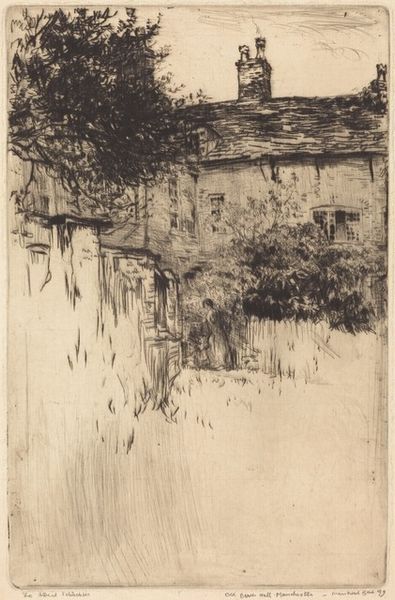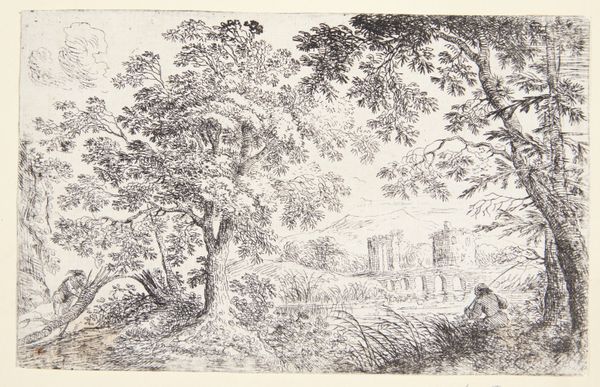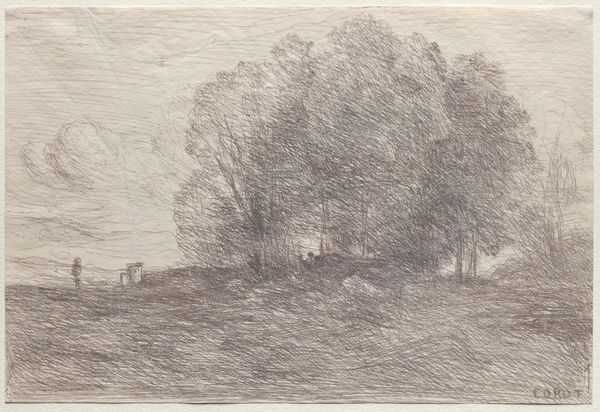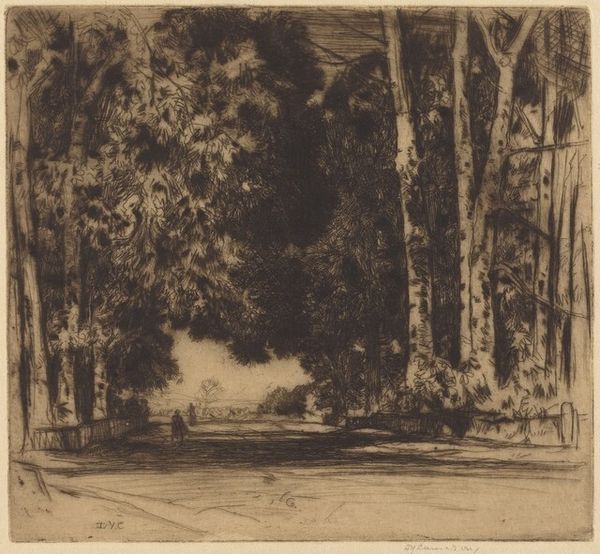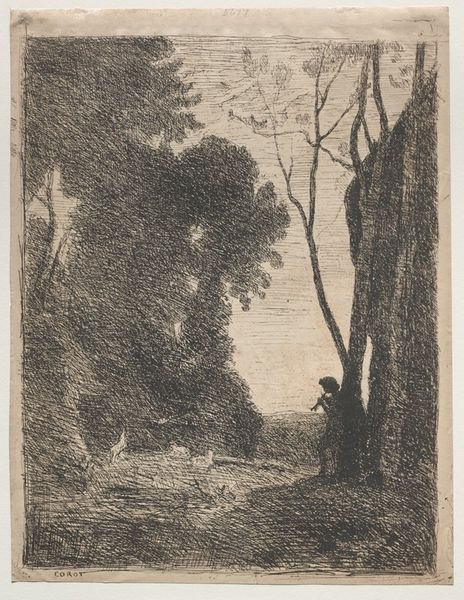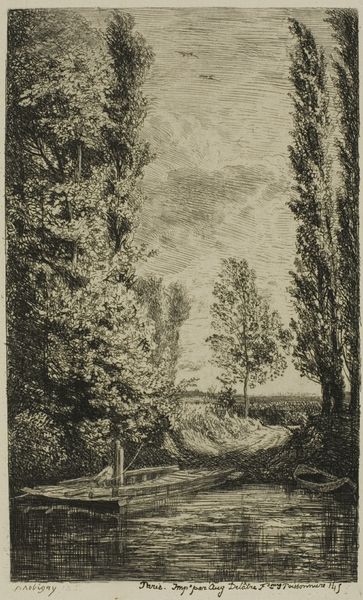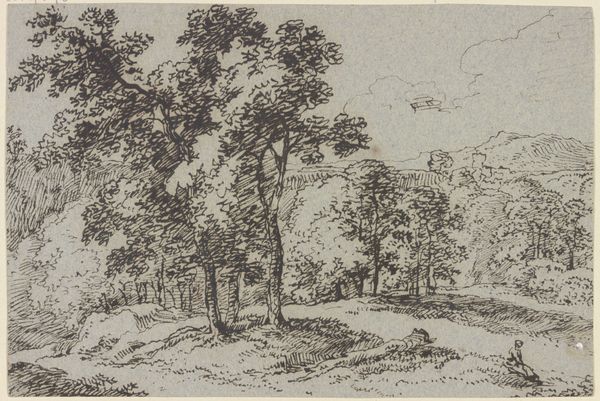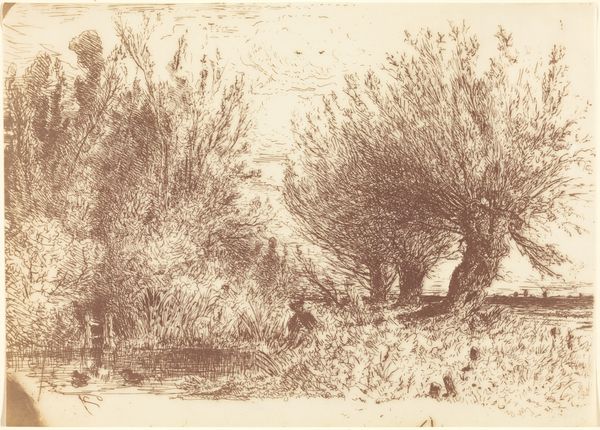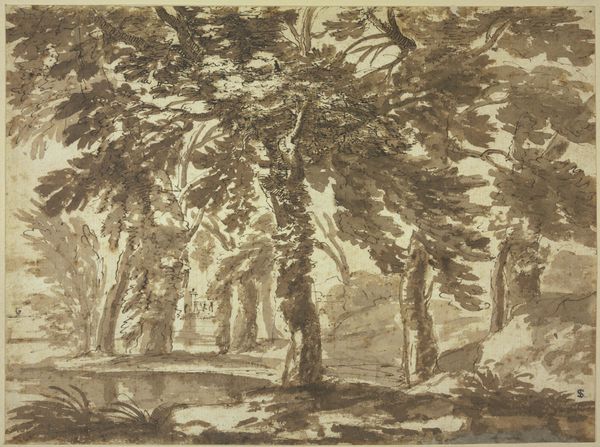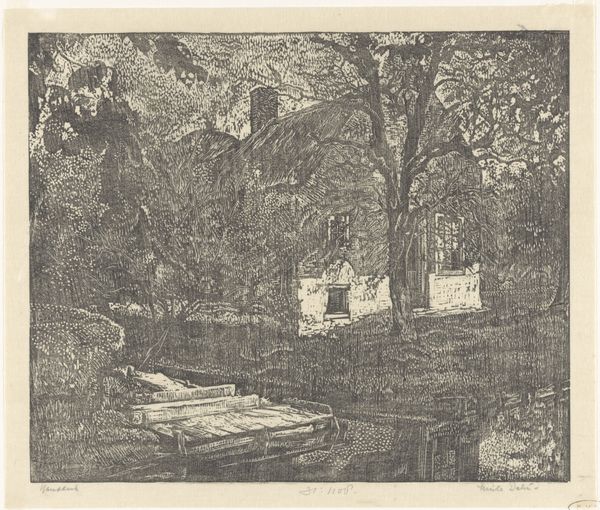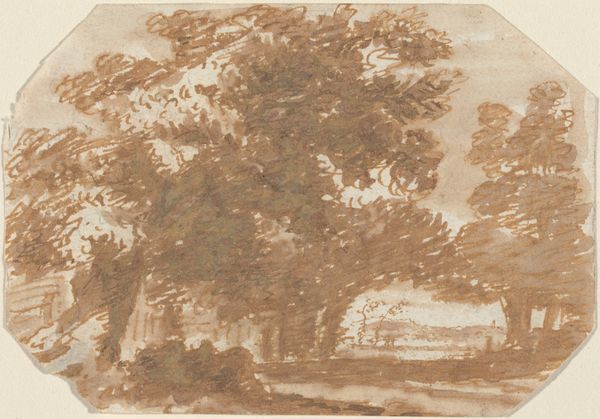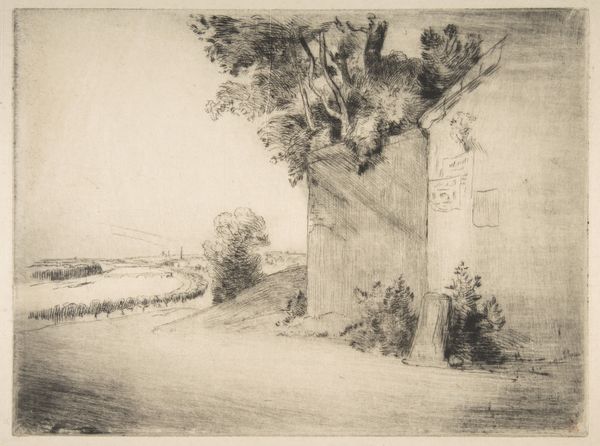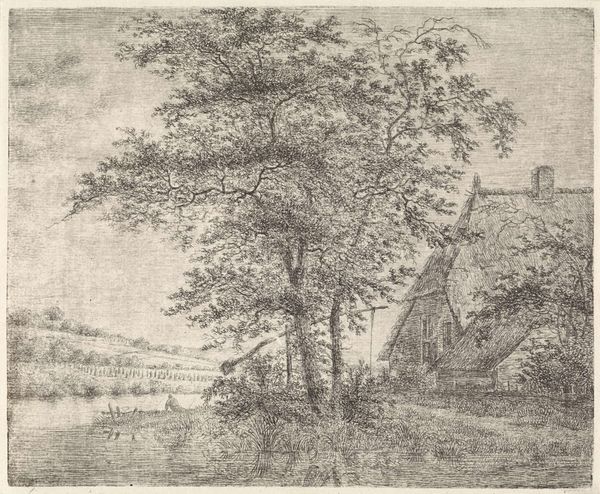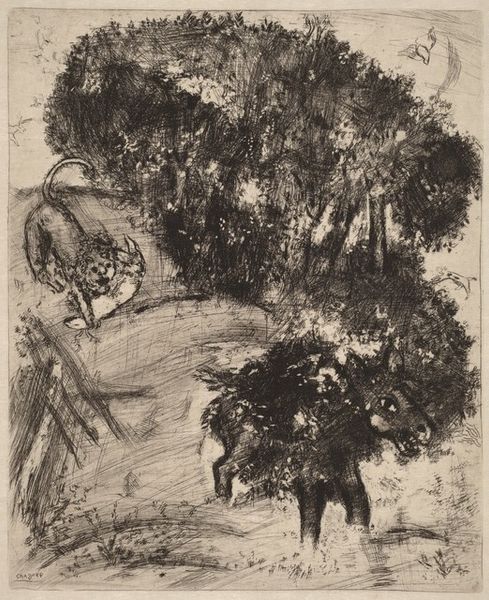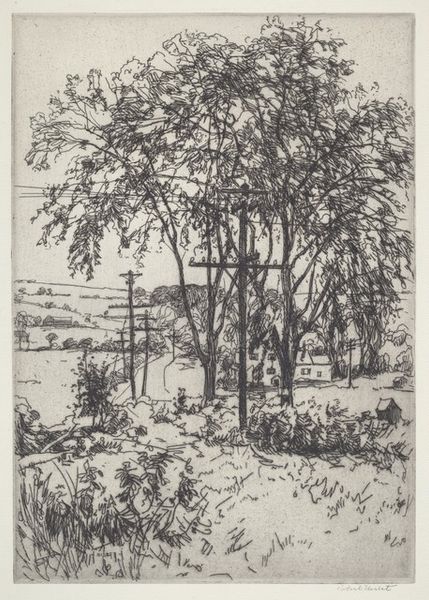
The Garden of the Loos les Lille Abbacy 1851
0:00
0:00
gustavecourbet
Palais des Beaux-Arts de Lille, Lille, France
plein-air, oil-paint, impasto
#
tree
#
garden
#
plein-air
#
oil-paint
#
landscape
#
house
#
impressionist landscape
#
oil painting
#
impasto
#
plant
#
genre-painting
#
history-painting
#
realism
#
building
Dimensions: 55 x 71 cm
Copyright: Public domain
Editor: Here we have Gustave Courbet's "The Garden of the Loos les Lille Abbacy," created in 1851 using oil paint in the plein-air style. The overwhelming green gives it a somewhat serene, but also heavy mood, like a dense forest is slowly encroaching upon the building in the distance. What are your initial observations, looking at it from an art history perspective? Curator: From a Formalist stance, one is compelled to consider the dialectic relationship between surface and depth in this composition. Courbet employs impasto to create a tactile surface, particularly noticeable in the foliage. How does this textured foreground affect your reading of the recessed architecture? Editor: I notice how the thickness almost makes the trees leap out, emphasizing their dominance over the scene, which draws my eye more to the left than to the house on the right. Is the flattening effect he creates typical? Curator: Precisely. Observe how the flattened perspective—a deliberate rejection of traditional Renaissance illusionism—compels us to acknowledge the painting's artifice. The color choices also demand our consideration: How do the muted tones contribute to or undermine the sense of spatial depth? Editor: The muted greens and grays almost neutralize the scene, removing any clear sense of vibrancy and contributing to that heavier mood I felt. It’s as if the color is actively suppressing any sense of dynamism. Curator: A astute observation. The restrained palette further abstracts the subject, drawing our attention away from mere representation and toward the painting’s formal qualities—the arrangement of shapes, the interplay of light and shadow, the very materiality of the paint itself. Ultimately, this work isn’t just a depiction; it is a meditation on seeing. Editor: That’s so insightful. I hadn't considered the active role of color in manipulating perception here; it’s clearly more than just a depiction of a garden!
Comments
No comments
Be the first to comment and join the conversation on the ultimate creative platform.
